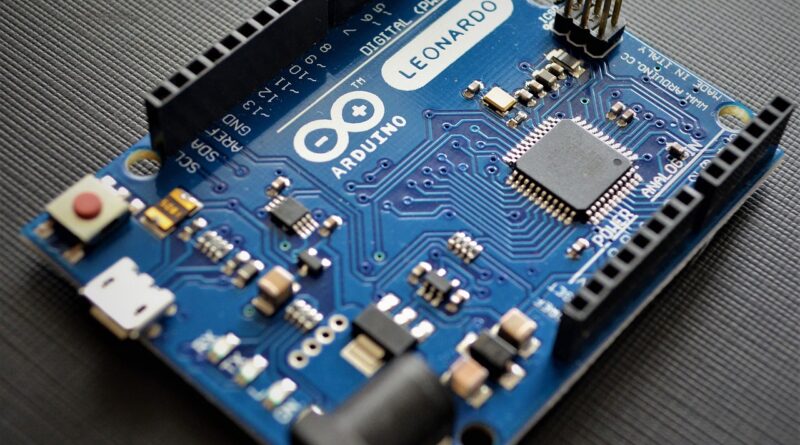Unveiling the Truth: Insights from Electrical Testing for a Safer Future
Introduction
In today’s fast-paced world, where electricity powers almost every aspect of our lives, ensuring electrical safety is of paramount importance. Electrical testing plays a crucial role in identifying potential hazards, reducing risks, and creating a safer environment for everyone. In this comprehensive article, we will delve deep into the world of electrical testing, uncovering valuable insights and shedding light on its significance in shaping a secure future.
Why Electrical Testing Matters
Electrical systems, whether in residential, commercial, or industrial settings, are complex and intricate networks. Over time, these systems can deteriorate, leading to potential dangers such as electrical fires, shocks, or equipment failure. Electrical testing is the proactive approach taken to assess the condition of these systems, identify faults, and rectify them before they pose a threat to safety.
The Role of Electrical Testing in Safety
- Ensuring Compliance: Electrical testing helps ensure that electrical systems comply with local regulations, codes, and safety standards. It verifies that installations meet the necessary requirements, minimizing the risk of accidents and ensuring legal compliance.
- Preventing Electrical Accidents: By identifying faults, loose connections, or overloaded circuits, electrical testing helps prevent electrical accidents, which can have severe consequences for individuals and properties. Timely detection and rectification of issues mitigate the chances of electrical hazards.
- Extending Equipment Lifespan: Regular electrical testing can identify potential issues that may cause premature equipment failure. By addressing these problems promptly, businesses can extend the lifespan of their electrical equipment, reducing the need for costly replacements and minimizing downtime.
- Protecting People and Property: Electrical faults can lead to fires, electrical shocks, or damage to property. Electrical testing helps identify and mitigate these risks, safeguarding the well-being of individuals and protecting valuable assets.
Types of Electrical Testing
Electrical testing encompasses various techniques and methods to evaluate the safety and functionality of electrical systems. Here are some commonly employed types of electrical testing:
1. Visual Inspection
Visual inspection forms the foundation of electrical testing. It involves a thorough examination of electrical components, looking for signs of wear, damage, or improper installation. This inspection ensures that the system meets safety standards and identifies any visible defects that may compromise safety.
2. Electrical Installation Testing
Electrical installation testing focuses on verifying the integrity and compliance of newly installed electrical systems. It includes tests such as continuity testing, insulation resistance testing, and polarity checks to ensure proper functioning and adherence to regulations.
3. Portable Appliance Testing (PAT)
PAT involves testing portable electrical appliances to assess their safety. It includes inspections, visual checks, and electrical tests to ensure that appliances do not pose a risk of electric shock or fire hazards.
4. Thermographic Testing
Thermographic testing, also known as infrared testing, utilizes thermal imaging cameras to detect temperature anomalies in electrical systems. By identifying hotspots, loose connections, or overloaded components, this non-intrusive testing method helps prevent potential failures and hazards.
5. Load Bank Testing
Load bank testing is commonly used for backup power systems, generators, or uninterruptible power supplies (UPS). It simulates real-world operating conditions to evaluate the performance and reliability of these systems, ensuring they can handle the required loads during power outages.
The Importance of Professional Electrical Testing
While basic visual inspections can be performed by individuals with electrical knowledge, comprehensive electrical testing requires the expertise of trained professionals. Here’s why relying on professionals is crucial:
- Expertise and Knowledge: Professional electrical testers have in-depth knowledge of electrical systems, safety standards, and testing procedures. They possess the expertise to identify potential issues that might be overlooked by untrained individuals.
- Specialized Equipment: Electrical testing often requires specialized tools and equipment to perform accurate measurements and evaluations. Professional testers have access to advanced instruments that ensure precise results.
- Compliance and Certification: Electrical testing companies and technicians adhere to industry standards and regulations. By hiring certified professionals, individuals and businesses can demonstrate compliance and ensure the accuracy and reliability of testing results.
- Safety Assurance: Professional testers prioritize safety during testing procedures. They follow strict protocols, wear appropriate personal protective equipment (PPE), and take necessary precautions to minimize risks during testing.
The Future of Electrical Testing
As technology continues to advance, so does the field of electrical testing. Emerging trends and innovations are shaping the future of electrical testing, enhancing safety measures and improving efficiency. Here are a few notable developments:
1. Internet of Things (IoT) Integration
The integration of IoT devices in electrical systems allows for real-time monitoring, data collection, and predictive maintenance. IoT-enabled sensors can detect abnormalities, monitor energy consumption, and notify maintenance personnel of potential faults, enabling proactive measures to prevent failures.
2. Smart Grids and Energy Management Systems
Smart grids and energy management systems optimize energy usage, monitor power quality, and improve fault detection. These advanced systems provide real-time data and analytics, enabling efficient management of electrical networks and early detection of potential risks.
3. Predictive Maintenance
Predictive maintenance techniques, coupled with advanced analytics and machine learning algorithms, can forecast equipment failures and recommend proactive maintenance actions. By identifying patterns and anomalies in electrical systems, predictive maintenance reduces downtime, extends equipment lifespan, and enhances safety.
4. Automation and Robotics
Automation and robotics are revolutionizing electrical testing processes. Robotic systems can perform intricate inspections, reach inaccessible areas, and carry out testing procedures with precision. Automation streamlines testing workflows, reduces human error, and improves overall testing efficiency.
In conclusion, electrical testing plays a vital role in ensuring safety, preventing accidents, and maintaining the functionality of electrical systems. By adhering to regulations, leveraging professional expertise, and embracing emerging technologies, we can create a safer future for all. Stay informed, prioritize electrical testing, and together, let’s build a secure world powered by electricity.




